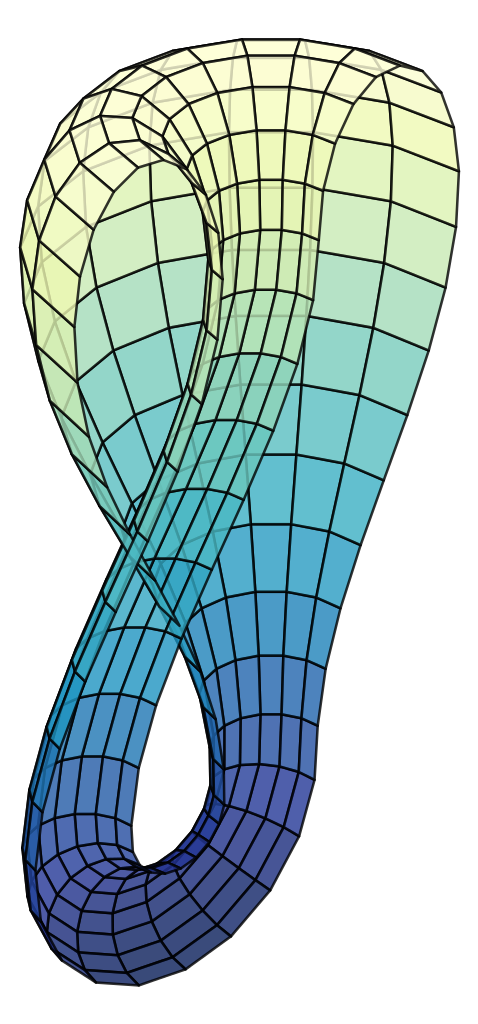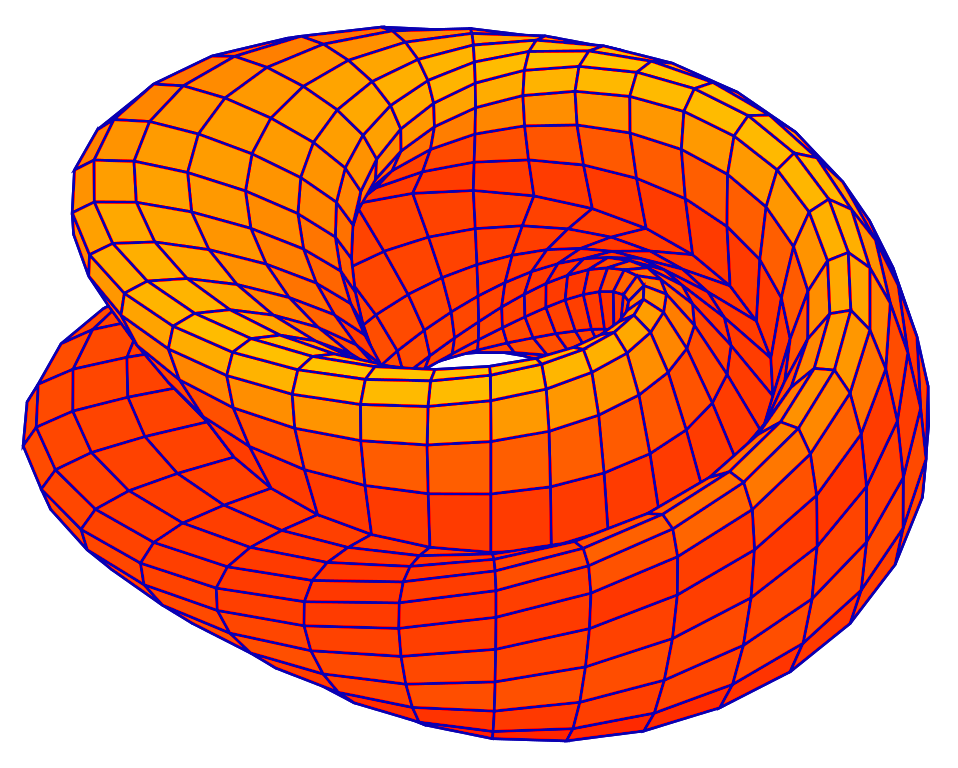Klein bottle

In mathematics, the Klein bottle /ˈklaɪn/ is an example of a non-orientable surface; it is a two-dimensional manifold against which a system for determining a normal vector cannot be consistently defined. Informally, it is a one-sided surface which, if traveled upon, could be followed back to the point of origin while flipping the traveler upside down. Other related non-orientable objects include the Möbius strip and the real projective plane. Whereas a Möbius strip is a surface with boundary, a Klein bottle has no boundary (for comparison, a sphere is an orientable surface with no boundary).
The Klein bottle was first described in 1882 by the German mathematician Felix Klein. It may have been originally named the Kleinsche Fläche (“Klein surface”) and then misinterpreted as Kleinsche Flasche (“Klein bottle”), which ultimately may have led to the adoption of this term in the German language as well.

The following square is a fundamental polygon of the Klein bottle. The idea is to ‘glue’ together the corresponding coloured edges so that the arrows match, as in the diagrams below. Note that this is an “abstract” gluing in the sense that trying to realize this in three dimensions results in a self-intersecting Klein bottle.
Construction
Source: Wikipedia